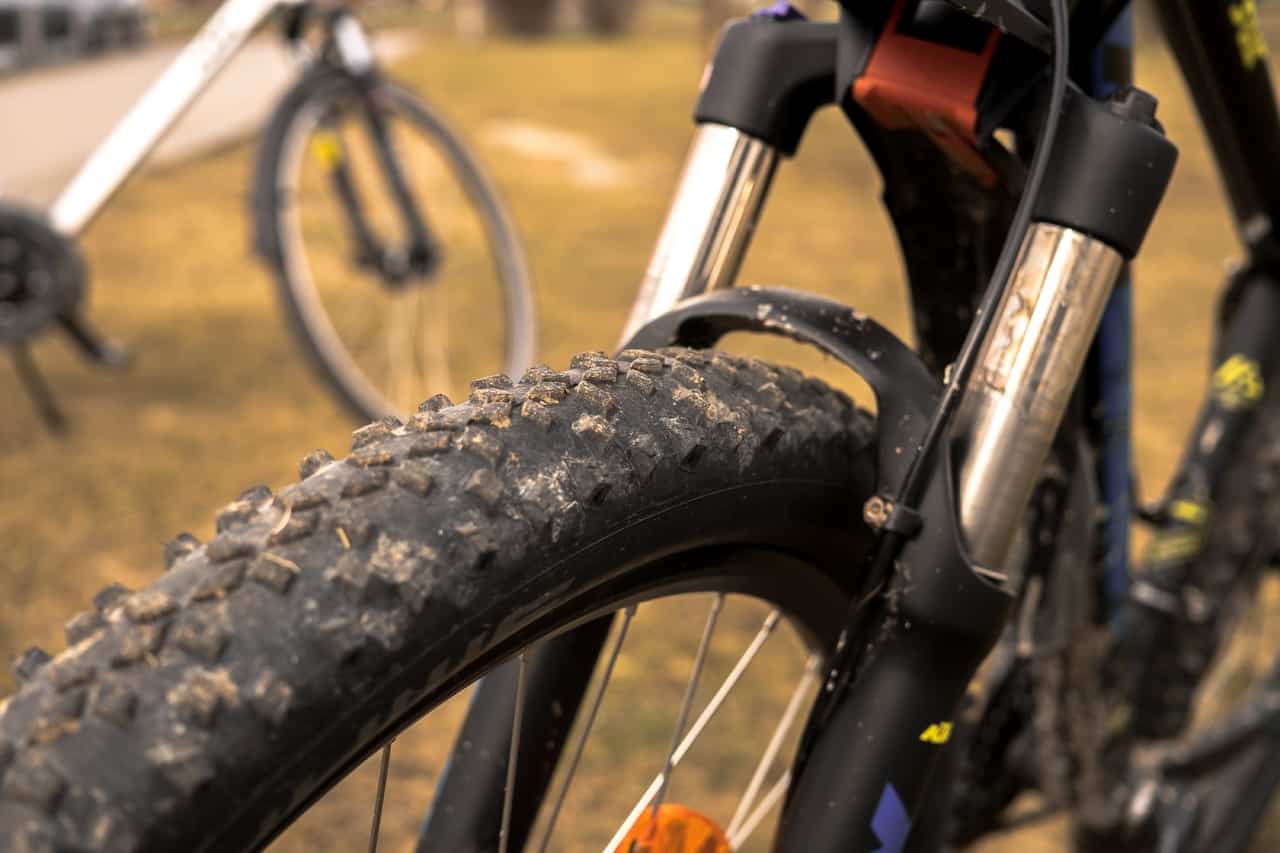Finding your bike with a flat tire when you’re just about to head out for a ride is extremely frustrating. Even though the tire was fine after your last ride. So, you might be wondering, is it normal for bike tires lose air over time?
This is unfortunately quite common and we’ll explain why. Bike tires lose air due to their porous rubber build, allowing air to seep out over time. Tires can hold air for some time, but not forever. And at some point, you will have to replace or pump them.
Let’s take a closer look.
The Science Explaining Loss of Air in Tires
Why do bike tires deflate over time? You can answer this with chemistry. Rubber is the primary material for tires, which is a porous material. Due to this, air will eventually escape the tires.
This usually happens slowly over time through the microscopic openings of tires. Usually, the thicker the rubber, the longer it takes for your tire to lose air.
Different Gas Affect Loss of Air
Aside from the rubber’s thickness, the gas type used will also influence air loss in tires. Gasses have different amounts of molecules, with oxygen having more and helium or CO having less.
If you fill up your bike tire with oxygen, it will last longer, but with helium or CO, you can expect it to go flat within 24 hours. With the lower molecule count, the gas escapes the pores of rubber quicker.
The Gas Laws
The science used to explain the loss of air in tires is called the gas law. The law defines the relationship between temperature, pressure, gas, and volume, and there are three primary laws.
The first is Avogadro’s Law, which states that as the gas goes up, the volume also goes up. Then, Boyle’s law says the volume increases when the pressure reduces. And finally, Charles’ law states that as temperature increases, the volume of gas also goes up.
This might seem a bit confusing so let’s break it down. If you live in colder areas, you lose more gas in your tires, pumping it more often during the winter months. Also, when there is high pressure around your bike, the air escapes quickly.
Speed First, Tire Health Second
The best way to ride your bike is with less weight. This will increase speed, so many bikers go for thin tires. Although this will enhance the performance of your bike in terms of ride quality and speed, it will shorten the lifespan of your tires.
You will have to fill in the tires almost every day if you decide to use a thin tire for speed. This is the case for professional bicyclists.
What You Can Do About This
There isn’t any fixed science explaining what you should do to prevent tires from losing air. As long as you use rubber tires, they will permanently lose air regardless of the type. Science is also a reason if you’re wondering why bike tires go flat when not in use.
One thing you can do to slow the process down is to use thicker rubber tires. The thicker the rubber, the slower the air will come out of the tire. But keep in mind that if you use a thicker tube, it will add weight to your bike and increase your rolling resistance.
This will make it harder for you to ride your bike quickly, and you’ll have to put more effort into pedaling. So, you might have to choose between pumping your tires often or working harder when you bike.
Another thing you can do is use oxygen to pump your tires. Oxygen has more molecules than other gasses, which means that it will extend the lifespan of your tires. But this won’t make much of a difference since many people use this gas for their tires.
Faulty Tires Are Also a Reason
There’s another reason why your tire might be losing air, especially if you wonder why bike tires lose air so quickly. Faulty tires have been penetrated by an object, usually something sharp. When this happens, air escapes quickly, faster than the natural speed.
If your tire is faulty, it can collapse, so it’s an obvious reason when you’re losing air. You can do different things to ensure that your tire does not get faulty or lose air at an abnormal rate.
You can easily recognize a faulty tire by inspecting it. If you check it and find a whole or a sharp object that has gone through it, this is a sign that it is losing air quickly.
It’s also possible for this to happen while you’re riding, especially on rough roads with many sharp objects and debris.
What You Can Do About It
It’s also good to maintain your tires often and use tube sealants. Tube sealants are a must-have for any bike owner because you can use them to repair flat tires and prevent future happenings.
But, sealants can’t protect your tube from holes or gashes while you ride. The type of bike tire you have will also determine the sealant you buy.
Another problem-solver for faulty tires is tire liners. These are installed between the tire and the tube and are little strips of plastic that protect your bike. Tire liners have become widely used among bike owners today.
Remember that they add about six ounces of weight to your tire and increase the rolling resistance. This can discourage bikers from purchasing it, although it’s an essential accessory if you often ride rough trails.
When purchasing a bike tire, you should go for puncture-resistant equipment. These are tires made with layers of aramid fibers to resist punctures. They might seem heavier and bulkier than your standard tire when you ride, but they do a great job of preventing punctures.
Basic Tire Maintenance Tips
Any bike owner needs to learn about basic tire maintenance, which can prevent a faulty tire. To maintain your tire, you should follow the steps below.
- Inspect your tire thoroughly while paying attention to detail. Look out for any objects that are protruding from the bike tire. Ensure you do this each time you complete a ride, especially if the route has a lot of debris.
- You might see a small piece of glass or a tiny pebble. This might not look like a big deal, but it can still move up to the rubber part of the tire and cause it to lose air.
- If you see debris in your tire, you should remove it regardless of its insignificant appearance. You can do so with a small dull tool or your fingernail if it’s not sharp.
- Next, check your tire’s sidewalls for dry cracks or excessive wear. If you notice that the sidewalls are wearing out, you should get them replaced because this can lead to a flat tire at any time.
- You should replace your bike tire every 2000 – 3000 miles even if it has not lost air yet. This will ensure that you use a high-quality tire and prevent accidents if it suddenly loses air.
- If you notice that your bicycle tire is getting flat more often than usual or there are signs of wear and tear like deep cuts and cuts in the sidewalls, you should replace the tires.
Conclusion
You can do nothing to prevent the tire from losing air. So, you should ensure that you have a bike pump on hand for when the tire has lost too much air.
Also, ensure that your bike tires have the correct air pressure, and go for puncture-proof tires if you want them to last long. Keep your eye open for anything that might cause your tire to go flat.





